Francesc Quílez and Eduard Vallès

The Museu Nacional has published a book about Isidre Nonell, entitled Nonell. Visions from the margins. The publication is the catalogue, turned into a book, of the exhibition that the Museu Nacional had planned to open in May 2020 and that could not be done, due to the COVID-19 pandemic.
In 2000, the Museu Nacional d’Art de Catalunya (National Art Museum of Catalonia) organised an exhibition devoted to the artist Isidre Nonell (1872-1911). On that occasion, the show was anthological in nature and featured a selection of some of Nonell’s most outstanding works as a painter and draughtsman, presented in chronological order.
Given the existence of this earlier event, it clearly would not have made much sense to repeat a similar approach. However, after an interim of two decades, the time has come to adopt a new methodological perspective to review the contribution to art made by Nonell, one of the essential artists in the Museu Nacional collections, and to re-evaluate the most outstanding features of his poetic and his sensibility.
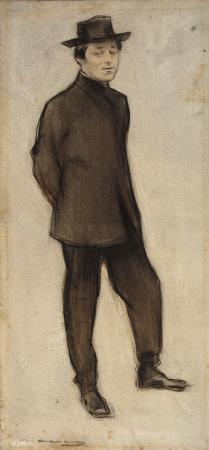
Regarded as a key painter for understanding the transformations that took place on the Catalan art scene around the turn of the twentieth century, a large number of historiographical clichés have grown up around the life and work of Isidre Nonell. These clichés have hampered true evaluation of the artist’s creative ability and the dimension of his singular poetic.
Taking as a starting point Nonell’s distinguishing feature of originality, this publication seeks to vindicate the universal condition of the artist’s work and the influence he exercised in paving the way towards the new directions later taken by Catalan art. The show also aims to highlight a truly modern sensibility that rejected the conventions, archaisms and references of traditional Western visual art.
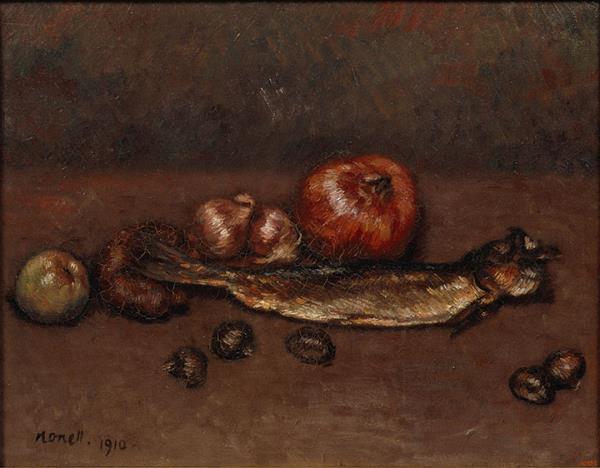
While recognising Nonell’s great merits, we must also note that his figure has been overshadowed by others and that his talent and brilliance has not been praised as highly as it deserves. In part, this lack of fortune can only be linked to a critical ambience whose attitude was in no way favourable to what was a most daring aesthetic stance by an artist who refused merely to accept the principles and postulates that shaped the modernist aesthetic.
The artist himself contributed to this phenomenon of historiographic scorn by cultivating social themes far removed from the gentler images that characterised the work of most modernist practitioners. Clearly unattracted by the commonplaces that most of his contemporaries cultivated, a decantation that provoked a rejection, both that of the conservative critics, and of a bourgeois clientele who observed with prevention a very uncomfortable proposal and contrary to their class interests.
Nonell’s social issues
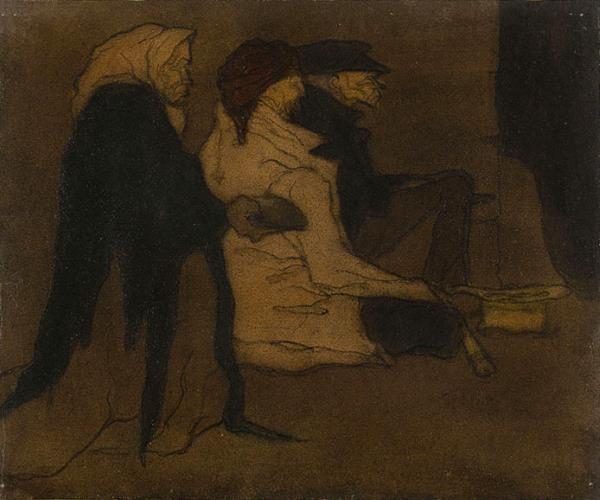
Nonell chose marginalised personages as the protagonists of his compositions. His models responded not one iota to the powerful, pleasurable aesthetic sensibility that marked the practice of the first modernist generation. Nonell’s radical stance encouraged later artists who, like him, were attracted to these characters from beyond the margins of bourgeois social convention. Without looking farther afield, we can mention that these themes were also shared by, among others, the likes of Carles Casagemas and Pablo Picasso. Indeed, despite the logical differences, the work of both artists can be better understood if observed through the prism of the influence exercisedby Nonell.
However, with the passing of time, all these prejudices have lost their force, and that unfavourable context has ceased to wield influence over critical judgement of Nonell’s impressive contributions. In this respect, we should note that, although his work clearly had many aspects in common with that of other contemporary artists, Nonell defies classification and is almost impossible to include in any artistic trend or movement.
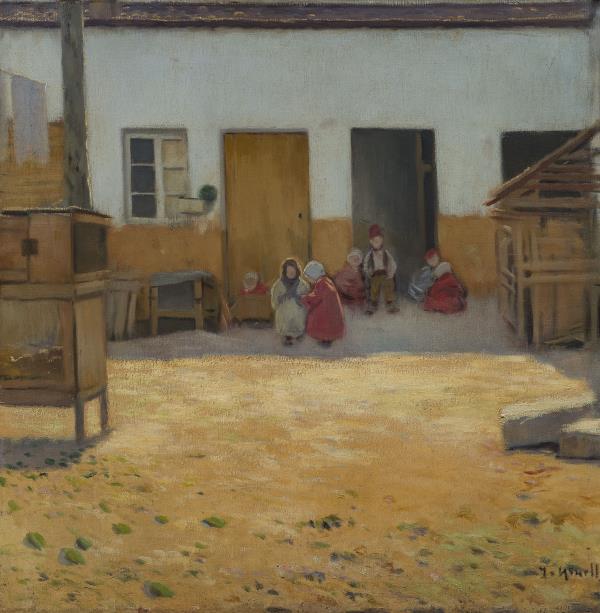
Moreover, Nonell was always a non-conformist, sceptical about the role that the artist should play in society. Far from accepting egoistic servitudes, Nonell ironised about the function and romantic conception of the figure of the artist.
His was a daring, risky quest to turn a period of conflict and tension, one in which there were huge differences between the social classes, into a stimulus to forge a highly subversive personal aesthetic. Although particularly interested in cultivating social themes (his works are largely populated by humble, excluded, marginalised characters that we can describe generally as those left behind by history), Nonell never stood out for his militant calls in defence of the poor or disadvantaged.
Nevertheless, despite never championing the cause of these social groups or becoming an active defender of them, Nonell made an even more radical contribution than that, as he elevated these people – destined to play bit parts in the history of Barcelona at the turn of the twentieth century –to make them the main characters of his compositions. In this sense, the transformative dimension of his art is undeniable. Completely lacking in class prejudice and as a declassé character himself, Nonell chose models that had traditionally been considered far removed from the canons of classical beauty to imbue them with nobility, dignity, elegance and beauty. One of his greatest contributions is the way he gave a patina of lyricism and sensuality to personages and spaces that, for sociological reasons and also in obedience to the prevailing tastes of the day, had been left in the margins.
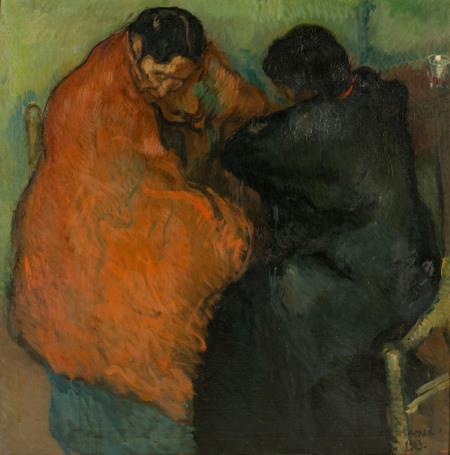
A look in context
To help to understand the complexity and versatility of Nonell’s work, this book also includes a selection of works by other artists from the past, more or less his contemporaries. Like Nonell, these artists also felt the urge to depict social themes, making this artistic material an instrumental resource with which to produce figurative works in different languages. This is, in short, an attempt to explain a phenomenon of the time that influenced such disciplines as photography, drawing, engraving and painting, and which found in Nonell one of its most outstanding exponents. The variety of images, found in a repertoire of works by different artists – Ricard Canals, Joaquim Mir, Steinlen, Daumier, Millet, Manuel Ainaud, Joaquim Sunyer, Ricardo Baroja, Casagemas and Picasso, among others – helps to suggest a context in which not only Nonell’s body of work was taking shape, but also that of other artists whoshared the same interests and felt attracted to the same thematic motifs.
The publication takes a completely new approach as, for the first time, Nonell’s work can be seen in the context in which it was created, generating a broad cultural vision. Comparing Nonell with other artists also helps to contextualise the outstanding originality of his poetic and the true status of this key figure in the development of modernist art in Catalonia. This conversation will enable us to reject certain reductionist visions that greatly limit the scope of Nonell’s contribution by considering him to have merely imitated other artists. In Nonell’s case, however, the citations or figurative debts present in some works are a positive sign of artistic openness. They are transformed into visual touches that do not neutralise the power and radical nature of a highly personal language in which the idea of tradition, represented by the work, among others, of Goya, Ribera, is also present. The dialectic comparison between Nonell’s work and tradition is one of the key pillars on which the exhibition narrative rests and, in the case of the theme of gypsy women, is seen in its true dimension. Indeed, in Nonell’s approach, the genre is stripped of all the clichés and folklore stereotypes that generally shape it. Nonell eschews this picturesque and literary vision to reinvent the theme and imbue it with fresh aesthetic values that reject racial connotations that generally mark representations of gypsy women.
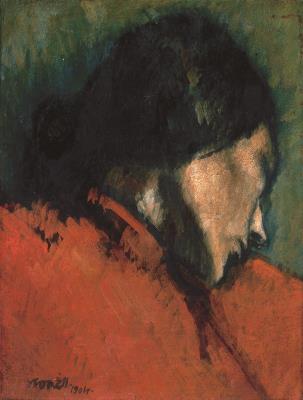
His portraits of gypsy women constitute one of the most original contributions of Catalan art of the time. His is an innovative and transformative approach, as it democratises a genre, that of portrait painting, traditionally reserved for the dominant bourgeois elites.
The importance of photography
Turning now to photography, the book includes a considerable number of works by practitioners who, during the time that Nonell was active, were also interested in capturing similar themes to his. The show features photographs by Claudi Carbonell, García Ayola, Francesc Serra (who took some of the well-known shots of Nonell’s studio and some of his gypsy women models), Joan Vidal i Ventosa, Joan Vilatobà, Robert Peters Napper and Frederic Ballell.
Particularly interesting among these photographs are the ethnographic and picturesque pictures of different sites in the Pyreneestaken by Frederic Bordas, Lluís Marià Vidal, Eduard Royo and Antoni Gallardo, which provide background to Nonell’s own Pyrenean works. They also includeportraits of people who suffered from the disorder of cretinism.

These disturbing images seen through the camera lens became, in Nonell’s art, which was inspired by his journey and experience in the Boí Valley in the summer of 1896, the expression of a magical, enchanting universe. Influenced by Japanese art, these works transcend the instinctive reaction of rejecting these peoplethat viewing these scenes might rationally inspire. This is a popular“primitivism” avant la lettre,a universe that transmits the sensation of dreamlike serenity and unreality, far from the orientalist exoticism practiced by nineteenth-century artists and from the tribal primitivism that would mark the development of the first avant-gardes.

New approaches to a modern artist
Nonell’s clearly modernist practice went even further, embracing the very material execution of the artwork, whether a drawing on paper or an oil on canvas. The research lines pursued by the Museu Nacional d’Art de Catalunya Department of Restoration and Preventive Conservation, carried out by Núria Pedragosa, Ruth Bagan and Núria Oriols,have cast light on Nonell’s singularity in his approach to painting procedures, colour selection and even the use of the rear of works. This research has produced surprising results thanks to the examination and analysis techniques applied. The work has also revealed the Catalan artist’s heterodoxy as a draughtsman. Nonell was a master of the art of drawing, exploring his own limits like an alchemist. One of the great breakthroughs presented at this book is the revelation of the secrets behind his famous fregits, “fried” drawings, through scientific study and empirical work, carried out by Carme Ramells and Núria Oriols,examining pieces by other artists such as Casagemas and Picasso. All this will no doubt help to elucidate the legend that has always been associated with Nonell.

The book also includes various relevant texts by specialists such as Francesc Fontbona, Ricard Mas and Glòria Escala, with different approaches to the work of this artist, as well as an updated chronology produced by the latter.
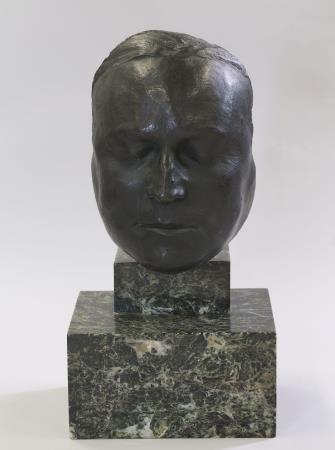
In short, the purpose of this publication is to highlight the absolutely countercultural nature of the work that Nonell presented to the artistic society of his day, workwhich that society was incapable of appreciating. Nonell was a new artistwithin the historical and artistic coordinates of the turn of twentieth century, a status which is reflected in both his choice of themes and the execution of his works. In this, he both transgressed and altered the conventions imposed on all sides, making no concessions and, for his pains, paying a very high price. Although often attributed with having uttered the statement “I paint, that’s all!”, Nonell was much more than a mere painter. He was an artist in the broadest sense of the word, an acute observer of reality, one with a refined sense of sensuality and thorough knowledge of techniques and materials. In short, Nonell was an artistready and willing to applya patina of lyricism and beauty to stigmas that existed in his day.
Related links
Nonell. Visions from the margins
Joaquim Mir & Picasso: Portraits, wild and solar
Casagemas, vindicated. History of a long research and of an exhibition
Ramon Casas and the Chinese Shadow Puppets. Bohemia and the popular imaginary
Scenes of creation: artists’ workshops / 1
Eduard Vallès and
Gabinet de Dibuixos i Gravats







